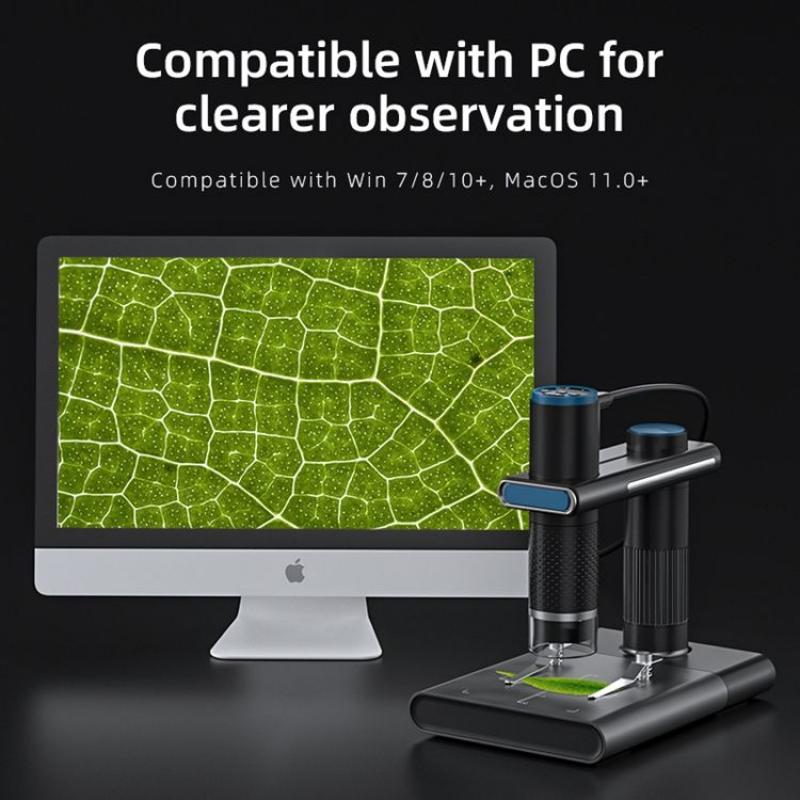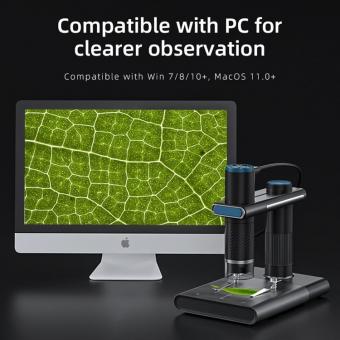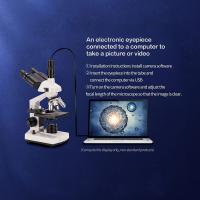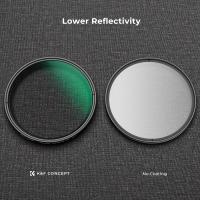Can We See Viruses With A Light Microscope?
No, viruses cannot be seen with a light microscope due to their small size. They are much smaller than the wavelength of visible light, making them invisible under a light microscope. Instead, electron microscopes are used to visualize viruses due to their higher resolution and magnification capabilities.
1、 - Virus Size and Structure

Yes, we can see viruses with a light microscope, although they are at the lower limit of resolution for this type of microscope. Most viruses range in size from about 20 to 300 nanometers, which is at the edge of what can be resolved by a light microscope. However, with the use of specialized techniques such as immunofluorescence staining or phase contrast microscopy, some larger viruses can be visualized using a light microscope.
It's important to note that the ability to see viruses with a light microscope is limited by the resolution of the microscope and the size of the virus. Some smaller viruses may not be visible using this method. However, advancements in microscopy technology, such as super-resolution microscopy, have allowed for improved visualization of viruses, pushing the limits of what can be seen with light microscopes.
In recent years, the development of advanced imaging techniques, such as cryo-electron microscopy, has revolutionized our ability to visualize viruses at the atomic level. This has provided unprecedented insights into the structure and function of viruses, leading to a deeper understanding of their biology and pathogenicity.
In conclusion, while light microscopes can be used to visualize some viruses, the development of advanced imaging techniques has greatly expanded our ability to study viruses at the molecular level, providing valuable information for the development of antiviral therapies and vaccines.
2、 - Microscope Limitations

- Microscope Limitations: Can we see viruses with a light microscope?
The limitations of a light microscope have historically made it challenging to directly visualize viruses. Due to their small size, viruses are typically below the resolution limit of a light microscope, which is around 200 nanometers. This has made it difficult to study viruses and has led to the development of electron microscopes, which have much higher resolution and can visualize viruses.
However, recent advancements in microscopy techniques have provided new insights into the visualization of viruses using light microscopes. One such technique is super-resolution microscopy, which has the ability to surpass the diffraction limit of light and achieve resolutions below 100 nanometers. This has enabled scientists to directly visualize individual viruses and study their structure and behavior in more detail.
Additionally, the use of fluorescent labeling and advanced imaging software has further enhanced the capabilities of light microscopy in visualizing viruses. By tagging viruses with fluorescent markers, researchers can track their movement and interactions within host cells, providing valuable information for understanding viral infections and developing antiviral treatments.
While electron microscopes remain essential for studying viruses at the atomic level, the latest advancements in light microscopy have expanded our ability to directly visualize and study viruses, offering new opportunities for research and discovery in virology.
3、 - Electron Microscopy Advancements

Yes, we can see viruses with a light microscope, but the resolution is limited due to the small size of viruses. Most viruses range in size from 20 to 300 nanometers, which is at the limit of what can be resolved by a light microscope. This means that while some larger viruses may be visible, many smaller viruses will not be distinguishable.
However, with the advancements in electron microscopy, we now have the capability to visualize viruses at much higher resolution. Electron microscopes use a beam of electrons to illuminate the specimen, allowing for much greater magnification and resolution compared to light microscopes. This has enabled scientists to study the structure and morphology of viruses in unprecedented detail.
Furthermore, recent advancements in electron microscopy techniques, such as cryo-electron microscopy, have allowed for the visualization of viruses in their native state, providing insights into their behavior and interactions with host cells. This has been particularly valuable in the study of emerging viruses and the development of antiviral therapies.
In conclusion, while light microscopes have limitations in visualizing viruses due to their small size, electron microscopy advancements have revolutionized our ability to study viruses at the nanoscale level, leading to a deeper understanding of their biology and pathogenicity.
4、 - Fluorescence Microscopy Techniques

Yes, we can see viruses with a light microscope, specifically using fluorescence microscopy techniques. Fluorescence microscopy allows for the visualization of viruses by using fluorescent dyes or proteins that bind to specific viral components, making them visible under the microscope. This technique has been instrumental in studying the structure, behavior, and interactions of viruses.
In recent years, advancements in fluorescence microscopy have further enhanced our ability to study viruses. Super-resolution microscopy techniques, such as structured illumination microscopy (SIM) and stimulated emission depletion (STED) microscopy, have enabled researchers to visualize viruses at a resolution beyond the diffraction limit of conventional light microscopy. This has provided unprecedented insights into the intricate details of viral structures and their interactions with host cells.
Furthermore, the development of genetically encoded fluorescent proteins has allowed for the labeling of specific viral proteins, enabling real-time tracking of viral particles within living cells. This has been particularly valuable in understanding the dynamics of viral infection and replication processes.
Overall, fluorescence microscopy techniques have revolutionized our understanding of viruses and have become indispensable tools in virology research. With ongoing advancements in this field, we can expect further breakthroughs in our ability to visualize and study viruses using light microscopy.







































